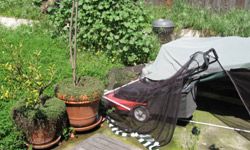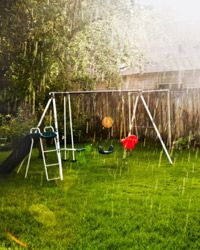If your home is your castle, but the area right outside looks like a blackened, scarred landscape worthy of a medieval battle scene, you know you have work to do. Your home's landscape wasn't meant to be abandoned, abused and neglected; it's an asset. In fact, a functional, beautiful yard can increase a property's value by as much as 20 percent [source: Colorado Business Magazine].
But maintaining your home's exterior takes time and money, and you're running short on both. However, there are ways to turn your no man's land into a gorgeous, eye-grabbing haven, without laying waste to your wallet.
Advertisement
First, let's define what we mean by landscaping. Some people think of grasses and flowers as the foundation of landscaping challenges, but there's more to it than greenery.
Instead, think of your yard project as a holistic environment in which the plant life, terrain, water bodies, and human-created elements, such as fences, walls, decks, patios and other structures, all combine to present a specific feel and function.
In order to create a lasting, beautiful, and valuable landscape outside your home, you'll have to do some planning. By taking the time to really ponder about how you want this precious space to look, you'll wind up with an area that not only looks great, but costs you a lot less money in the long run. Although Americans might spend around $45 billion in a single year for landscaping and lawn services and supplies, you don't have to contribute your hard-earned income to that huge figure [source: National Gardening Association].
On the next page, we'll dive into our series of 10 tips that will help you morph a yard into your castle's exterior paradise, and for less cash that you imagined.





